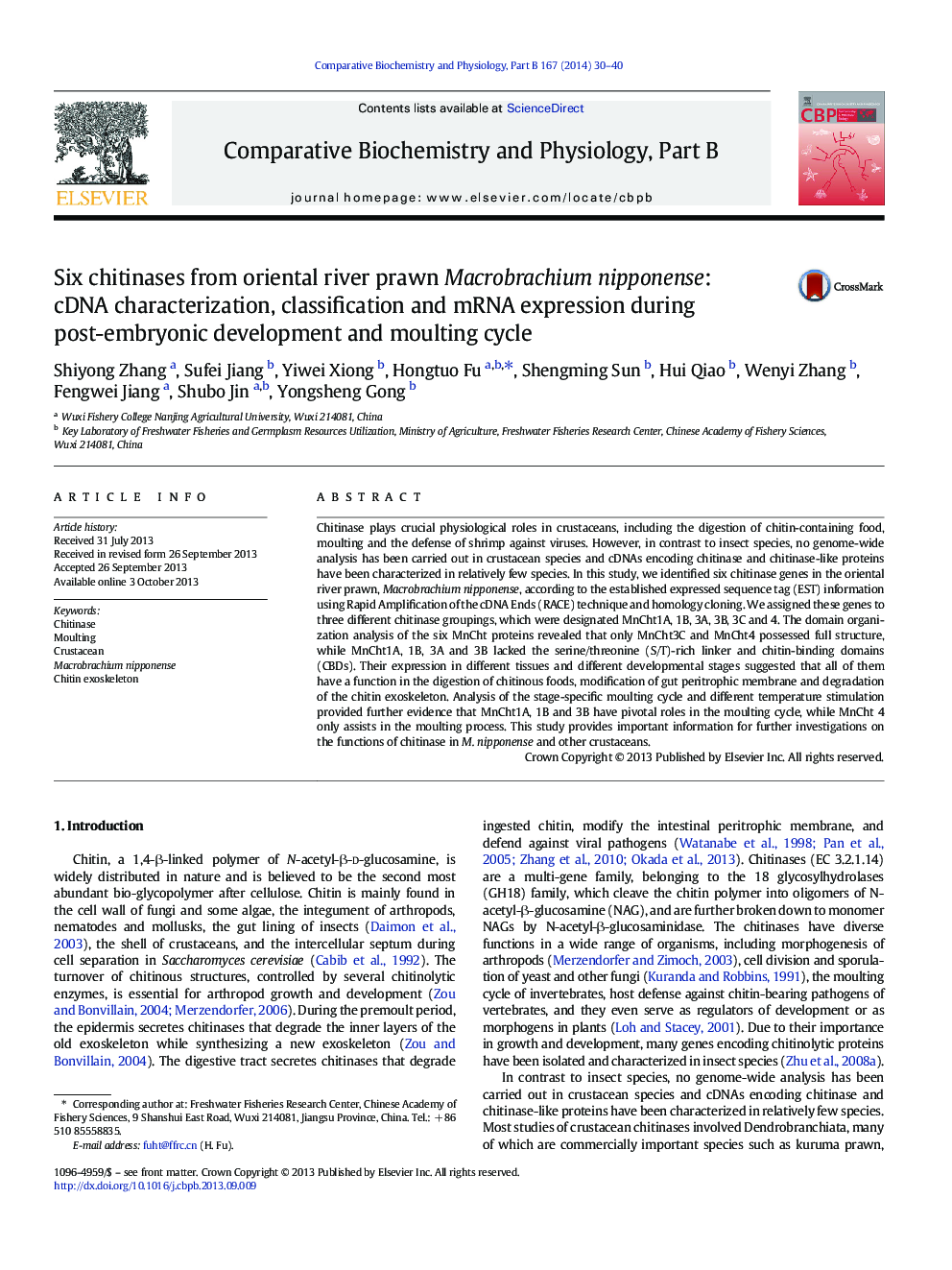| Article ID | Journal | Published Year | Pages | File Type |
|---|---|---|---|---|
| 1975363 | Comparative Biochemistry and Physiology Part B: Biochemistry and Molecular Biology | 2014 | 11 Pages |
Chitinase plays crucial physiological roles in crustaceans, including the digestion of chitin-containing food, moulting and the defense of shrimp against viruses. However, in contrast to insect species, no genome-wide analysis has been carried out in crustacean species and cDNAs encoding chitinase and chitinase-like proteins have been characterized in relatively few species. In this study, we identified six chitinase genes in the oriental river prawn, Macrobrachium nipponense, according to the established expressed sequence tag (EST) information using Rapid Amplification of the cDNA Ends (RACE) technique and homology cloning. We assigned these genes to three different chitinase groupings, which were designated MnCht1A, 1B, 3A, 3B, 3C and 4. The domain organization analysis of the six MnCht proteins revealed that only MnCht3C and MnCht4 possessed full structure, while MnCht1A, 1B, 3A and 3B lacked the serine/threonine (S/T)-rich linker and chitin-binding domains (CBDs). Their expression in different tissues and different developmental stages suggested that all of them have a function in the digestion of chitinous foods, modification of gut peritrophic membrane and degradation of the chitin exoskeleton. Analysis of the stage-specific moulting cycle and different temperature stimulation provided further evidence that MnCht1A, 1B and 3B have pivotal roles in the moulting cycle, while MnCht 4 only assists in the moulting process. This study provides important information for further investigations on the functions of chitinase in M. nipponense and other crustaceans.
